Making oils with tinctures
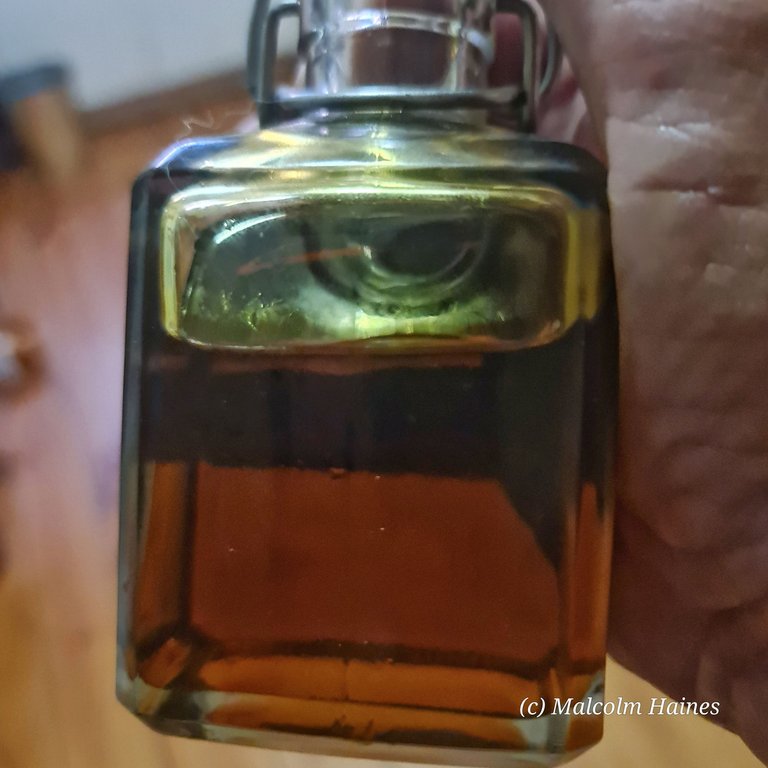
Recently, I had an emergency request for some Lavender oil, of which I had none.
Not to be daunted, I looked to my tinctures and found some Lavender, luckily prepared in 90% alcohol. There had to be some way to infuse some oil with the benefits of the tincture…and there was!
I found the answer in Christopher Hedley and Non Shaw’s book ‘A herbal book of making and taking‘.
Their approach to making a quick oil is to add 50% tincture to 50% oil and bring it to a light boil until the alcohol and the water in the concoction has boiled off.
When working with oils, it is best to use a double boiler so that the heat reaching the oil is reduced. If you’re not sure on what a double boiler is its a set of two pots that sit one inside the other with a gap between the bases.
In that gap, you add water that will be heated. Your oil goes into the too pot where it receives a more constant, reduced amount of heat. Make sure that you work out where the top pot sits in the bottom one so that it isn’t actually sitting in the water
Mark the level of the combined mix – use a large spoon or such and mark on the handle. Bring the water to a slow boil then place the top pot into position and Bob’s your Uncle!

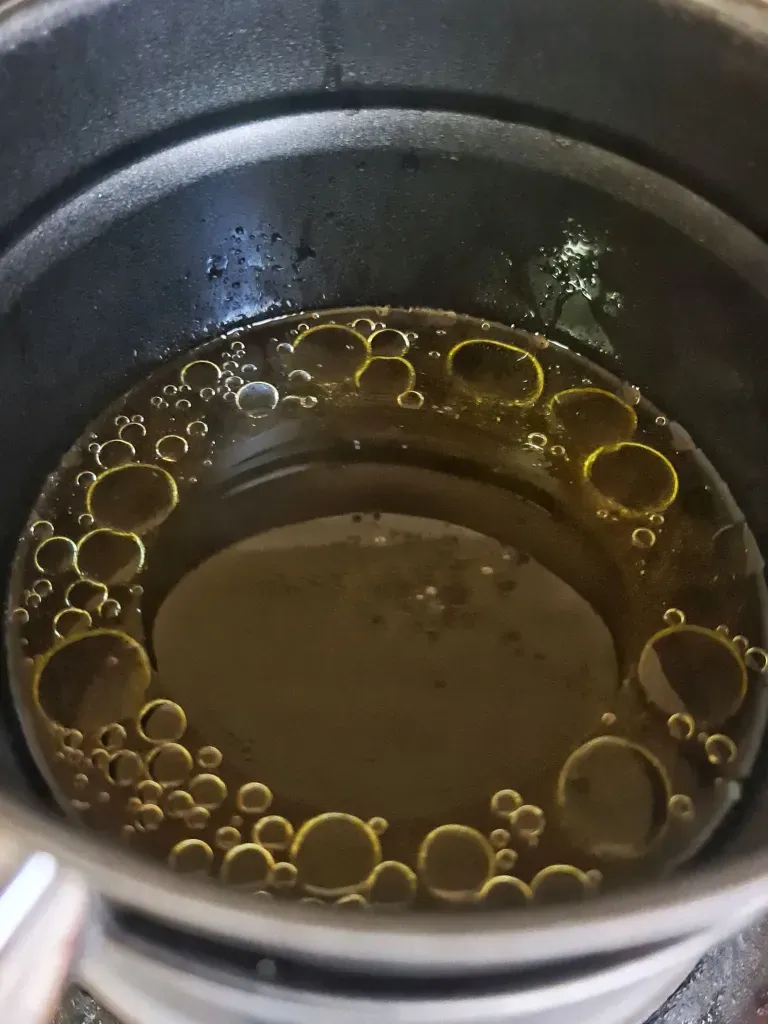

It may take a couple of hours to evaporate out the alcohol and water that formed the tincture and the slower you do it, the more of the beneficial constituents of the tincture are taken up by the oil.
Because you started with a 50/50 mix, you will know that things are ready when the volume is reduced to half. If you’re not confident in how much you’ve boiled off, it is OK to pour the liquid into a glass container and leave it for a while. Because they’re imiscible (they don’t mix) the oil and other liquids will separate and you can gauge how much heating more you need to do by the thickness of the bottom layer.
If you’re in a super hurry, save some time by pouring the liquid into a glass container, allowing it to separate for a while, then draw off the BOTTOM layer. This will contain the water/alcohol mix and the oil will float above that. The oil won’t be as strong but you’ll be removing a lot of the water content. I find that drawing off the bottom layer gives me more control over what I am drawing up that if I drew off the top layer. A turkey baster is an excellent way to draw off the liquid.
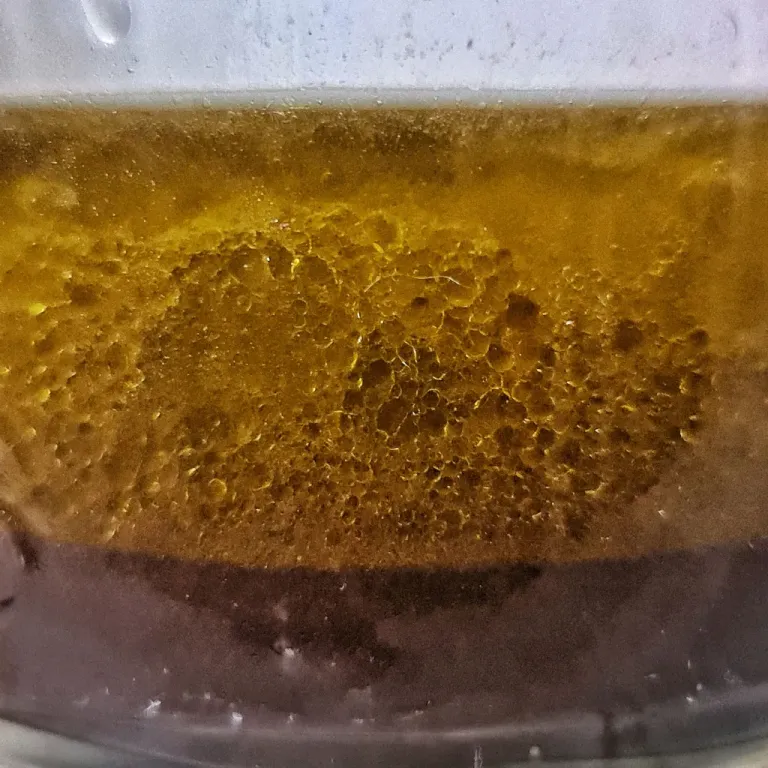
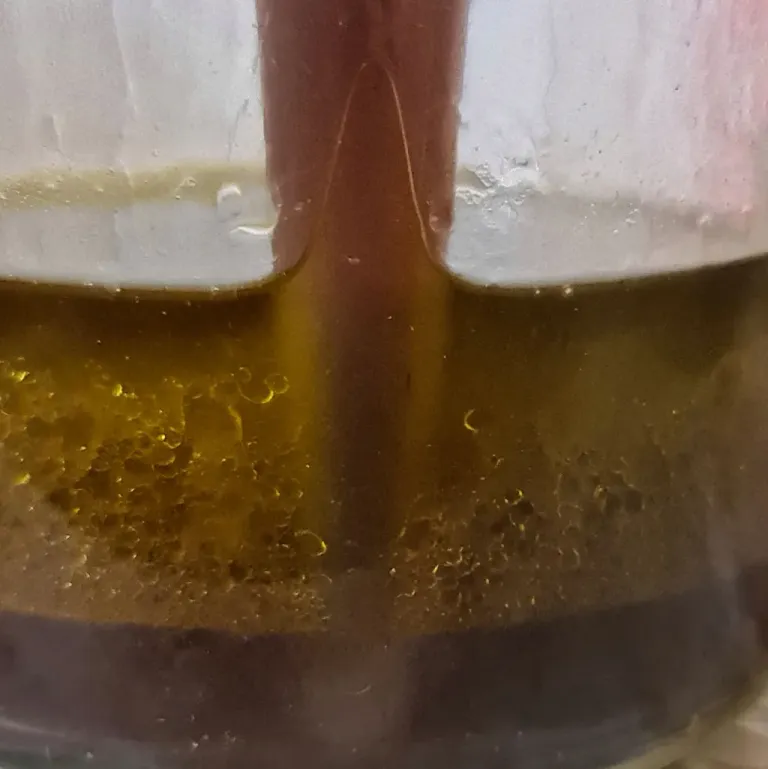
You’ll probably never get all of the water/alcohol out of the oil, if you look at the pic below, you can see how mixed it is after an hour of sitting. Don’t worry though, as long as most is out, you’ll be right. It is an emergency oil made in a hurry, afterall.
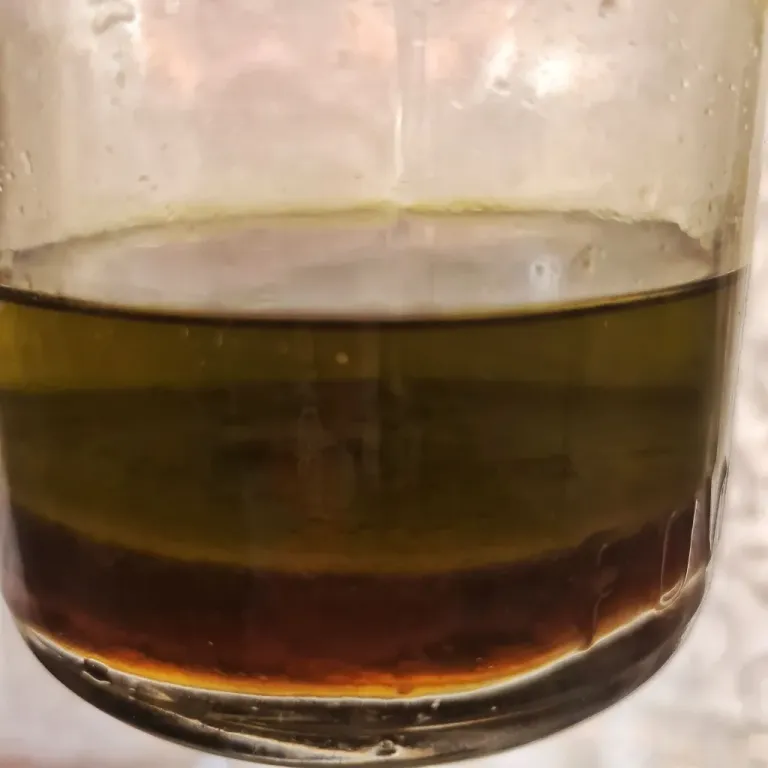

Some of you may have seen that I've been writing a series of posts about herbs and making herbal remedies at home. I want to share what I know of this topic so that, as the world gets crazier, folks will have other avenues of medical care, namely those of themselves and their community. If you look back over this blog, you can see heaps of info on the topic, plus loads and loads of posts on herbs and using Australian bushfoods from a white perspective. If you haven't been around on in the @hivegarden and @naturalmedicine communities for long, you may be interested in looking back. There's w-a-a-a-a-y too much there for me to repost and the Hive system doesn't let you vote on old posts so, if you're happy with what you find, I believe that there is now a tip option...




